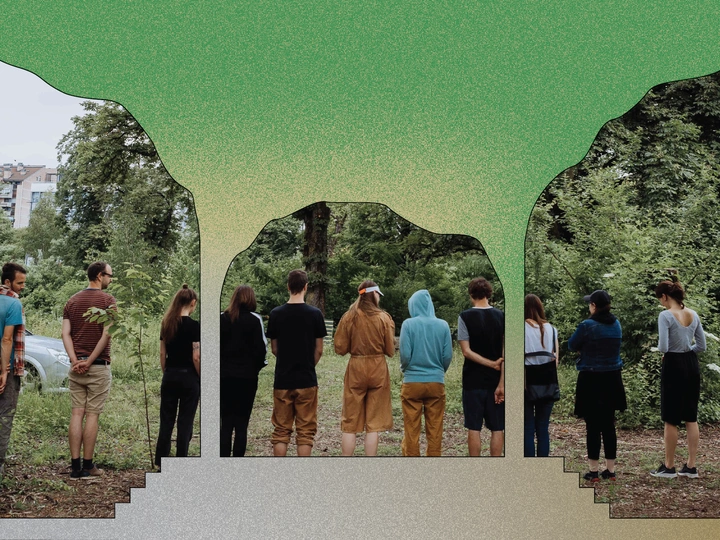The Feral Palace: multispecies typologies

Klaas Kuitenbrower
Renata Šifrar
Amadeja Smrekar
Debra Solomon
Eva Stopar
Zala Velkavrh
Danica Sretenović (architect, curator, independent scholar) and Gaja Mežnarić Osole (eco-social designer, inventor, co-founder of Trajna) joined forces to open up space for questioning established management strategies in connection with our disturbed urban ecologies. The alliance introduces multi-species thinking strategies across the fields of design-ecology, participation, law, and critical reading of contemporary spatial production. More can be found at eflux: The Feral Palace
The Feral Palace is a design intervention in multispecies insensitive spatial planning. Within the tendering framework of a national architectural competition, Krater’s site was understood as a tabula rasa, which centers our work around the questions: What makes regenerative, nature-led processes invisible to the planning administration? Is there enough room in this notion of (spatial) justice to include the rights of the non-humans that indisputably co-constitute our living environments? To address these multi-layered issues The Feral Palace open call reframed Krater’s site-related conflicts and speculated on a multispecies inclusive Palace of Justice.
The Feral Palace is a situated urgency, relying on practices of reciprocity and care, activism, experimental pedagogies, and the formation of a research community. Such urgency rejects extractive operational logic by offering interventions, speculations, declarations - an archive of possible futures in place of a single future of Krater’s extinction. Framing critical questions with potency to shift the inevitable (the Palace of Justice) into previously unseen position (the Feral Palace) brings forth otherwise non-existent imaginaries of multispecies-sensitive futures of the rewilded site. It also sparks a trans-disciplinary debate around the rights of untamed cityscapes, living soil-archives, evacuation of ecosystems, multispecies urbanism, etc. While the traditional architectural practice is slow to react in urgency, the action of becoming feral (running away from established institutional frameworks to the unpredictable ones) lets us seek territories, where individualized precarity is softened with the alliance of multispecies collectivity. Feral practice is a trans-disciplinary work in numerous directions: urgent pedagogies, feral cartography, chronologies of slow disturbance, detecting discrepancies between administrative policies and multispecies typologies, publications, exhibition, communication, etc